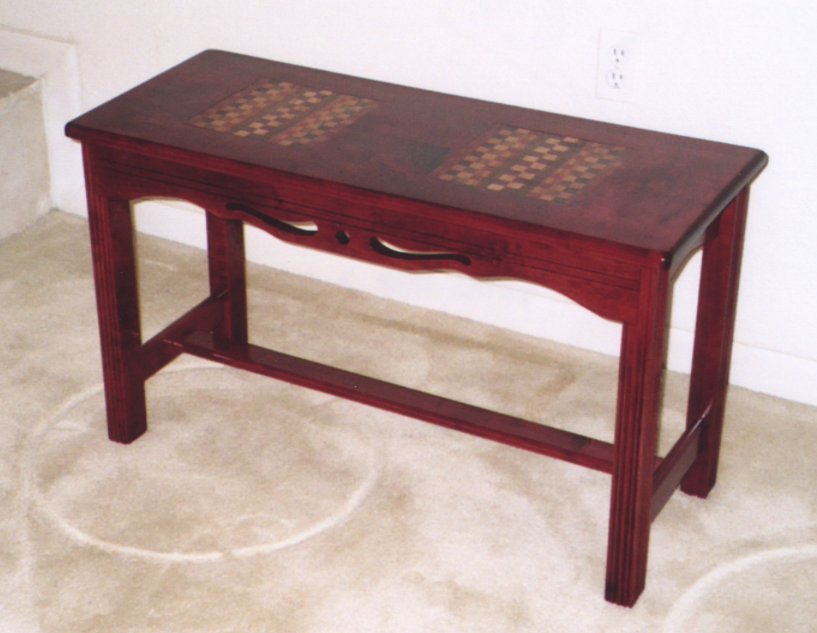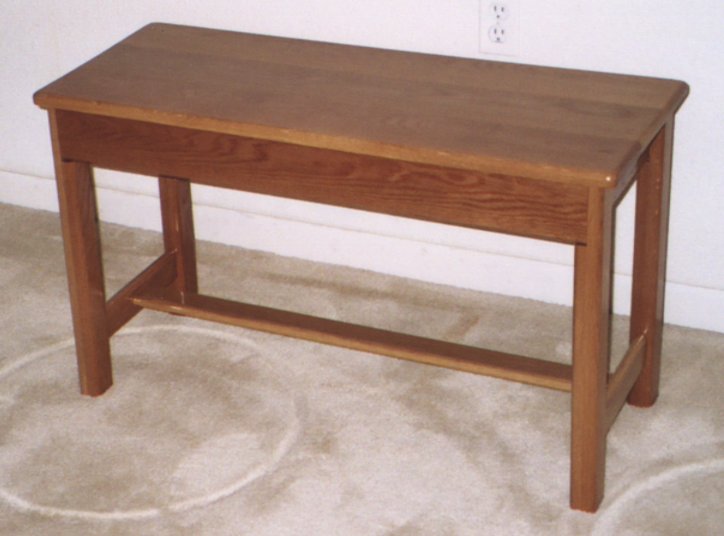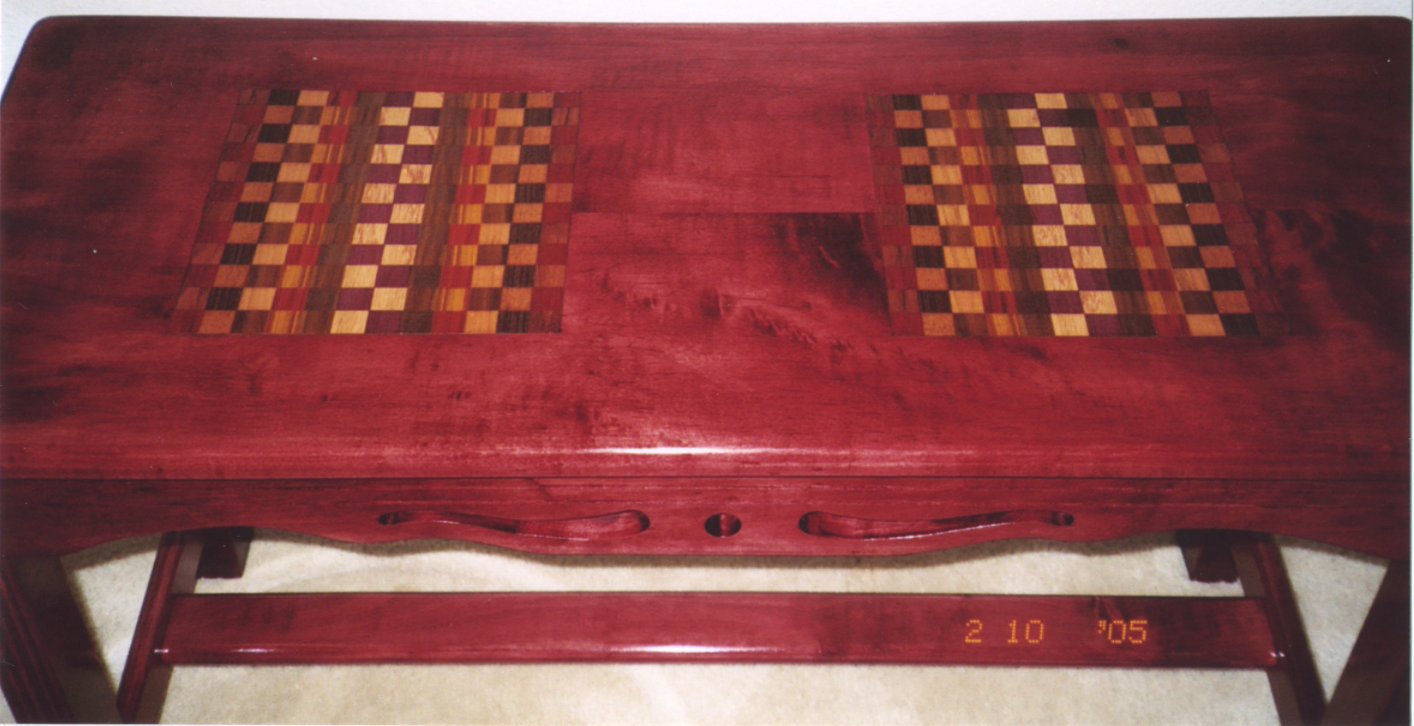Specifications
One bench is made of unstained oak and one is made of maple
stained with a medium red mahogany color. Both have a high-gloss
polyurethane finish. The maple bench has two checkerboard inlays of
12 different types of wood.
Story
The seed of this project idea came from the wife of a friend that
wanted a hallway bench for their house to sit on while putting on and
taking off their shoes. In my role as a consultant on what would be
good options, I realized I could use a similar thing. I set out
designing this, basing the general size and shape after an old piano
bench I have (which I once upon a time converted into a paded changing
table for my infant daughter).
The design incorporated some fancy inlayed checkerboard patterns
(see picture at right) .
This was another one of my "trying to be creative" with the use for
some scrap woods from a previous project. This is the same motivation
that resulted in the
Decorative Table project: it also consists of pieces left from the
Frames and Shelves
project. I'd learned the trick to making checkerboards in 7th Grade
Wood Shop (the Tressle
Table project) and had just the right size strips of wood from the
12 varieties of woods to make a neat checkered mosaic. The original
design had a lot more inlays, but after routing the two main
checkboards, I bailed out on getting any fancier (afraid I'd press my
luck and mess it up.) The 12 woods in the checkerboard are: cherry,
oak, koa, mahagony,
teak, canary wood, walnut, red heart, padauk, bubinga, purple heart,
wenge.
About 6 months after I settled on the design I bought the wood
(maple) to make my bench and my friend also bought wood (oak) where I
would make both simultaneously with some help possibly. The wood sat
there for nearly a year until I found the time and motivation to get
it going.
My friends oak table would be the basic designed shape with some
rounding of the ends. Mine needed to match the color an design of
existing furniture, of which consists of the End Tables project modeled
after this original coffee
table. I thus took the same decorative patterns and themes and
incorporated them into this bench. I needed to stain the maple (using
nasty, poisonous stain), and finished it with polyurethane since this
will be a heavy-wear pice of furniture.
Miscellaneous Notes/Thoughts
- The leg-side join is strong, but could have been stronger if I had done a proper mortise and tenon joint. The legs were not that thick, so I would have had to do another beveled mortise and tenon similar to the End Tables project. I was not so ambitious when I was making the joinery decision on this. I am mildly unhappy with this decision.
- The mortise and tenon joints that join the lower side rails to the legs were the best ones I ever made to date, and didn't require my laboring too much. It was after the relative ease of these that I began to regret I didn't do this for the top sides.
- The stain on the maple bench is splotchy. I forgot to put some prestain stuff on it.
- Polyurethane picked up some dust particles. I was too impatient to wait for afew weeks to let all the crud in the garage air settle out.
 Cassandra.org
Cassandra.org


